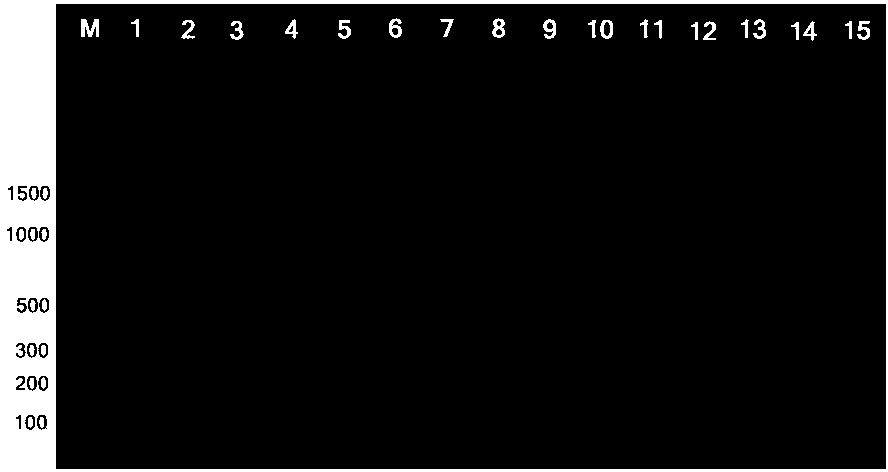Method for identifying helix pomatia by PCR (polymerase chain reaction) detection
A snail and cover technology, applied in the field of molecular biology detection and identification, can solve the problems of little knowledge about the classification of terrestrial molluscs, and achieve the results of guaranteed reliability, high sensitivity and reliable results
- Summary
- Abstract
- Description
- Claims
- Application Information
AI Technical Summary
Problems solved by technology
Method used
Image
Examples
Embodiment 1
[0016] Embodiment 1: the PCR primer specificity test of cover cover big snail
[0017] 1. Preparation of materials
[0018] The snails for testing are as follows: cover big snail Helix pomatia (Dutch specimen), the large cap snail Helix pomatia (German specimen), garden onion snail Cepaea hortensis , forest onion snail Cepaea nemoralis , loose big snail Helix aspersa Tianshui baby snail Pupinidius tianshuiensis , Ciba snail Bradybaena sequiniana , Mediterranean white snail Cernuella virgata , gray pointed snail Brady Baena ( Acusta ) ravida ravida , bright big snail Helix lucorum Tiaohua snail Cathaica ( Cathaica ) fasciola fasciola , Yongan ring rib snail Plectotropis yonganensis , Sven Miller's snail Nesiohelix swinhoei , flat snail Brady Baena ( Brady Baena ) uncopila , Satsuma snail Satsuma stenozona .
[0019] The above-mentioned snails were intercepted in the national port quarantine or obtained through domestic investigation ...
Embodiment 2
[0031] Embodiment 2: PCR detection sensitivity test of the large snail with cover
[0032] The 10-fold concentration serial dilution method was used to dilute the DNA stock solution (100 ng / μL) of the snail snail extracted in Example 1 to 10 ng / μL, 1 ng / μL, 100 pg / μL, 10 pg / μL, 1 pg / μL, There are 7 different concentration gradients of 100 fg / μL and 10 fg / μL.
[0033] PCR amplification reaction system: the total volume is 25 μL, including 12.5 μL of 2×Taq PCR MasterMix mixture, 0.5 μL of upstream and downstream primers (10 μM), 2 μL of DNA template, and the rest with sterilized ddH 2 O make up. After mixing, put it into a PCR amplification instrument for amplification.
[0034] The PCR amplification reaction program was: pre-denaturation at 95°C for 5 minutes; 30 cycles at 95°C for 30 s, 45°C for 30 s, and 72°C for 1 min; extension at 72°C for 10 min, and the reaction was terminated.
[0035] Detection and identification of PCR products: Take 10 μL of PCR products and elec...
PUM
 Login to View More
Login to View More Abstract
Description
Claims
Application Information
 Login to View More
Login to View More - R&D
- Intellectual Property
- Life Sciences
- Materials
- Tech Scout
- Unparalleled Data Quality
- Higher Quality Content
- 60% Fewer Hallucinations
Browse by: Latest US Patents, China's latest patents, Technical Efficacy Thesaurus, Application Domain, Technology Topic, Popular Technical Reports.
© 2025 PatSnap. All rights reserved.Legal|Privacy policy|Modern Slavery Act Transparency Statement|Sitemap|About US| Contact US: help@patsnap.com


